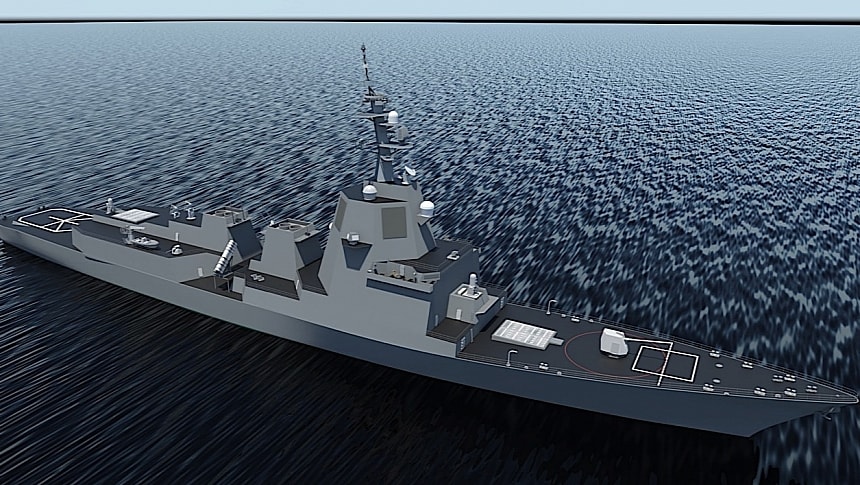About half a century ago the United States started fielding a naval defense technology described as the "first fully integrated combat system." Officially called Aegis Combat System, the technology still is the U.S. Navy's most advanced anti-air and anti-surface defense tool. And that's because it keeps getting better and better.
The Aegis Combat System is the work of defense contractor Lockheed Martin, and comprises everything a surface vessel would need to defend itself and fight off threats: the missile launching element, the computer programs, the radar and the displays – all beautifully working together to get the job done.
The thing is so successful that it has already been deployed on no less than 110 ships (collectively called Aegis system equipped vessels, or ASEVs), with over 70 more planned to get it in the near future. And these ships serve not only American interests, but also the ones of allied nations like Australia, Japan, South Korea, Norway, and Spain.
Today's Aegis-related piece of news comes in the form of something being cooked up for the U.S. Missile Defense Agency's Long Range Discrimination Radar (LRDR) program, but also for the Spanish F-110 frigate, the Canadian Surface Combatant programs, and the Japanese Navy.
That something would be the AN/SPY-7(V)1 radar. Purpose-built to work with the Aegis, the system was recently put to the test at Lockheed Martin's Production Test Center in Moorestown, New Jersey.
The test was basically the first live track of the SPY-7 radar. Because of the sensitive nature of the technology, the company did not share the full details of the test, but we are told it marked the moment when the SPY-7 tracked for the first time objects in space. That's right, in space.
The dry run was meant to check "the maturity of the radar system" but also "marked the beginning of comprehensive performance testing." The test was run on the SPY-7 radars meant for the Japanese Navy, which is on track to field the Aegis and this new capability on two of its ships.
SPY-7 is described no more no less as the most powerful radar in the world (after all, it can track objects in space, right?). It can detect, but also track and engage, ballistic missiles and other types of high-speed, advanced weapons. And it can do that for more than a single target at a time.
The radar can be operated around the clock, and if anything happens, it can be repaired with no need for shutdown. It can also be deployed on land, not only on ships.
The SPY-7 first came into the spotlight in 2018, and it has been continuously tested since. It has been awarded a Readiness Level 7 by the U.S., meaning some of these tests have been conducted in operationally relevant environments.
Lockheed Martin does not say exactly when the SPY-7 will be deployed in the hands of the Japanese Navy and the other forces scheduled to get it.
The thing is so successful that it has already been deployed on no less than 110 ships (collectively called Aegis system equipped vessels, or ASEVs), with over 70 more planned to get it in the near future. And these ships serve not only American interests, but also the ones of allied nations like Australia, Japan, South Korea, Norway, and Spain.
Today's Aegis-related piece of news comes in the form of something being cooked up for the U.S. Missile Defense Agency's Long Range Discrimination Radar (LRDR) program, but also for the Spanish F-110 frigate, the Canadian Surface Combatant programs, and the Japanese Navy.
That something would be the AN/SPY-7(V)1 radar. Purpose-built to work with the Aegis, the system was recently put to the test at Lockheed Martin's Production Test Center in Moorestown, New Jersey.
The test was basically the first live track of the SPY-7 radar. Because of the sensitive nature of the technology, the company did not share the full details of the test, but we are told it marked the moment when the SPY-7 tracked for the first time objects in space. That's right, in space.
The dry run was meant to check "the maturity of the radar system" but also "marked the beginning of comprehensive performance testing." The test was run on the SPY-7 radars meant for the Japanese Navy, which is on track to field the Aegis and this new capability on two of its ships.
SPY-7 is described no more no less as the most powerful radar in the world (after all, it can track objects in space, right?). It can detect, but also track and engage, ballistic missiles and other types of high-speed, advanced weapons. And it can do that for more than a single target at a time.
The radar can be operated around the clock, and if anything happens, it can be repaired with no need for shutdown. It can also be deployed on land, not only on ships.
The SPY-7 first came into the spotlight in 2018, and it has been continuously tested since. It has been awarded a Readiness Level 7 by the U.S., meaning some of these tests have been conducted in operationally relevant environments.
Lockheed Martin does not say exactly when the SPY-7 will be deployed in the hands of the Japanese Navy and the other forces scheduled to get it.







